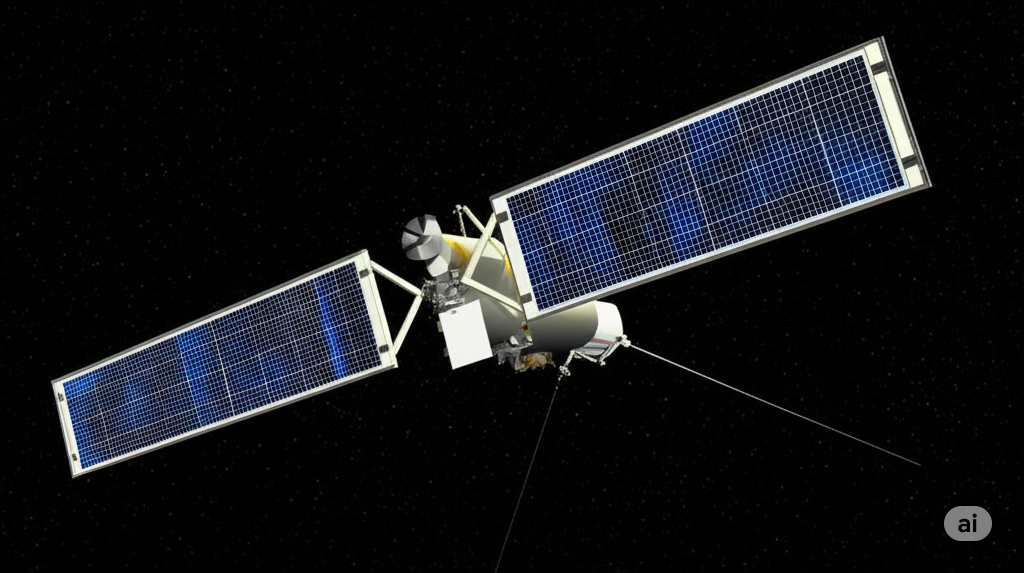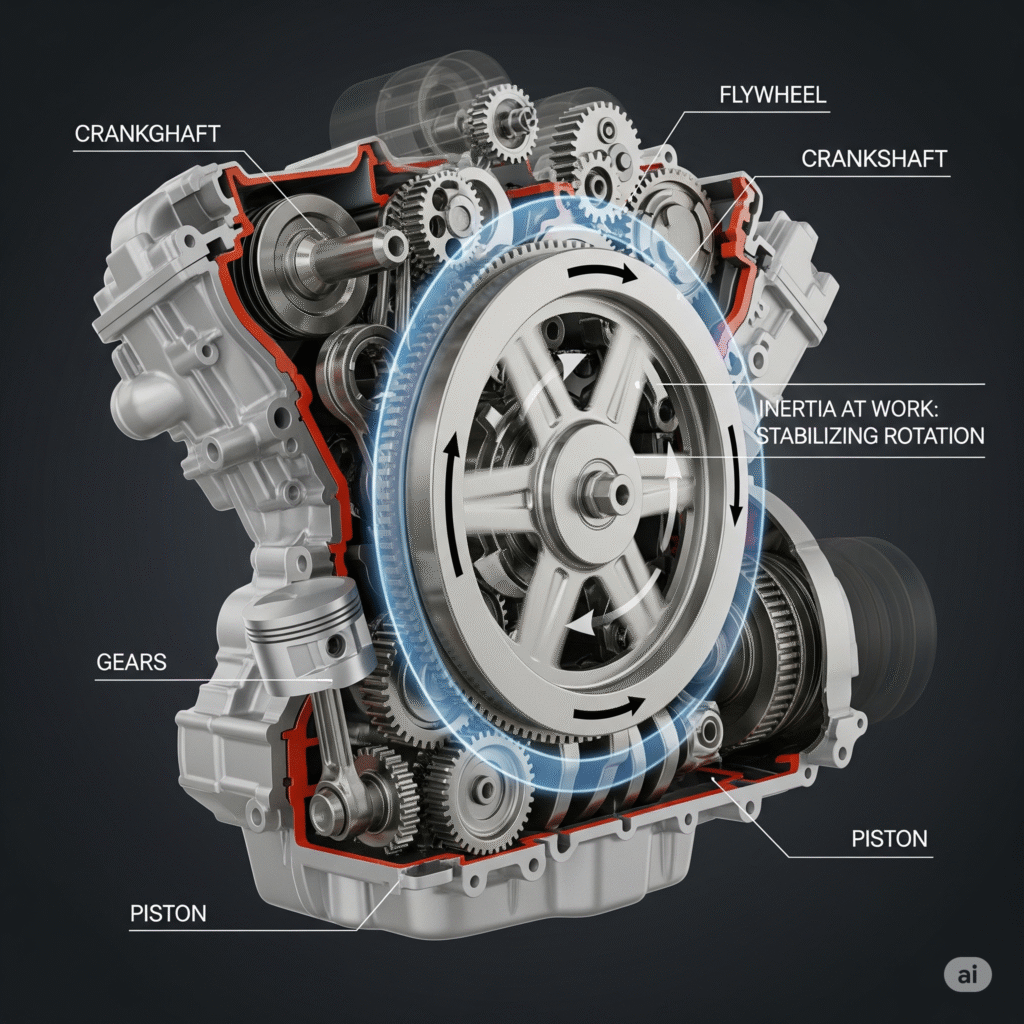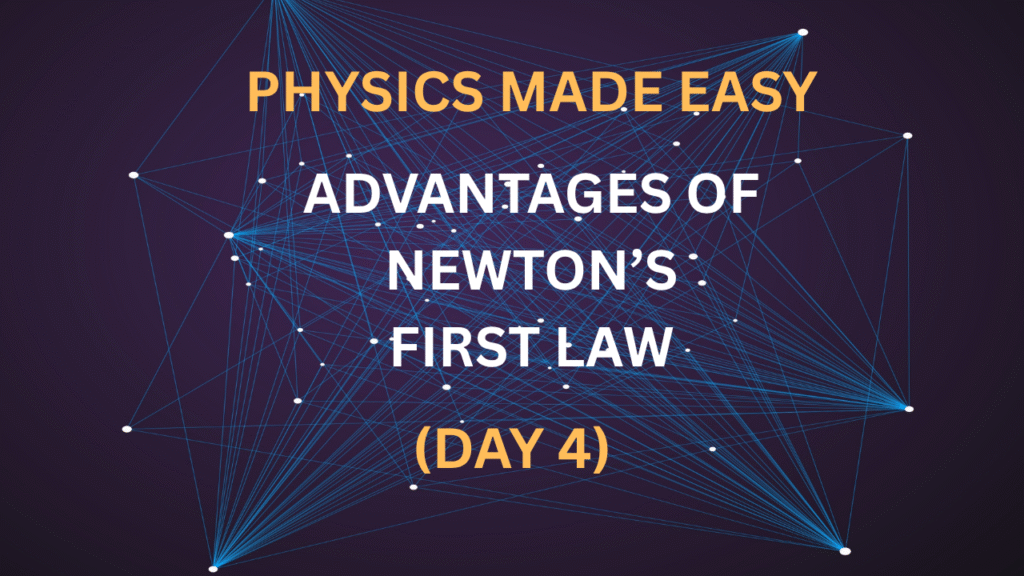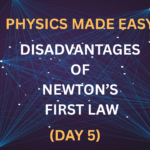What Are the Advantages of Newton’s First Law?
Newton’s First Law, also known as the Law of Inertia, tells us that objects resist changes in their state of motion. As we’ve explored in Newton’s First Law Explained and What is Inertia?, this isn’t just textbook science—it has powerful real-life benefits across industries and everyday situations. Let’s explore the top five advantages of this fundamental law as part of our Physics Made Easy series.



Exploring the Advantages of Newton’s First Law
1.Saves Energy in Space
In outer space, there’s virtually no air resistance or friction to slow objects down. This means once a spacecraft begins moving, it continues its journey without needing more fuel to maintain speed. Scientists and engineers use this principle to design incredibly efficient space missions.
Benefit: Saves immense amounts of fuel, energy, and significantly reduces mission costs.
Real Example: NASA utilizes gravitational slingshot techniques, where a probe gets a “push” from a planet’s gravity. Once accelerated, the probe coasts through vast expanses of space for years, solely due to inertia learn more about NASA’s exploration methods.
2.Used in Safety Devices
Another crucial advantage of Newton’s First Law is its application in predicting what happens during a crash. Because passengers continue moving forward when a car stops suddenly, safety systems are meticulously designed to counteract this inherent motion.
Safety Devices Based on Inertia:
Seat Belts: Provide the necessary external force to hold the body securely in place during sudden stops or collisions.
Airbags: Deploy rapidly to cushion the impact when the body keeps moving forward, distributing the force over a larger area.
Benefit: Dramatically saves lives and reduces severe injuries in accidents, forming the bedrock of modern automotive safety explore car safety standards by NHTSA.
3.Helps in Designing Machines
The practical advantages of Newton’s First Law extend directly into the engineering world. Understanding inertia is crucial in designing tools, machines, and vehicles that function smoothly, stably, and efficiently.
Applications:
Machines with rotating parts, like engines, often use flywheels that store rotational energy efficiently due to their inertia, ensuring smooth operation.
Vehicles are designed with their inertial properties in mind to optimize control, steering, and braking systems.
Benefit: Ensures machines work efficiently, reliably, and safely, contributing to better performance and longevity in various industries understand more about engineering fundamentals.
4.Predictable Motion for Engineers & Scientists
One significant advantage of Newton’s First Law is the predictable motion it enables. Because objects behave consistently according to this law (remaining in their state of motion unless acted upon), scientists and engineers can accurately predict how systems will behave. This is essential in:
Robotics: Precisely calculating the paths and movements of robotic arms and autonomous machines.
Automotive Design: Predicting how a car will respond under various driving conditions, optimizing handling and stability.
Aerospace Engineering: Simulating and planning complex rocket launches, satellite orbits, and spacecraft trajectories with high precision.
Benefit: Allows for the creation of accurate simulations, reliable systems, and precise technological advancements.
5.Smooth Motion in Transportation
The advantages of Newton’s First Law also contribute to smooth and efficient transportation. Once vehicles like trains or large ships reach a certain speed:
They continue to move forward with minimal additional energy required to maintain that motion.
This inherent tendency to maintain motion (inertia) results in greater fuel efficiency and smoother rides for passengers, reducing jolting and discomfort.
Benefit: Reduces fuel consumption, minimizes wear-and-tear on engines, and enhances passenger comfort across various modes of transport.
Summary
Let’s wrap up with a quick overview of why Newton’s First Law is so useful:
- Conserves Energy: Especially vital in space travel and for creating fuel-efficient vehicles.
- Protects Lives: Seat belts, airbags, and crash safety designs are fundamentally built on understanding inertia.
- Supports Science: Enables predictable motion, leading to better experiments, research, and scientific understanding.
- Improves Engineering: Crucial for designing balanced, controlled, and efficient machines and systems.
| Advantage | Application | Outcome |
| Space Efficiency | Satellites, Space Probes | Fuel savings, extended missions |
| Road Safety | Cars, Seatbelts, Airbags | Injury prevention, increased survival rates |
| Engineering Innovation | Machines, Vehicles | Balanced control, efficient operation |
| Research & Simulation | Robotics, Aerospace Design | Predictability, accurate modeling |
| Smooth Transportation | Trains, Ships, Cars | Fuel efficiency, passenger comfort |
Why This Matters
Whether you’re studying physics, designing a new product, or simply riding in a vehicle, Newton’s First Law plays an unseen but crucial role. From safer roads to smarter machines and exploring outer space, understanding inertia is at the heart of modern science and technology. Comprehending these advantages of Newton’s First Law empowers us to design better, safer, and more efficient systems that benefit everyone.
What Do You Think?
Have you seen Newton’s First Law (or its advantages) in action in your daily life? Maybe while driving or observing machines? Share your thoughts or examples in the comments below!
Coming up next: Day 5: Discover the Disadvantages of Newton’s First Law.
Stay curious. Stay scientific.



